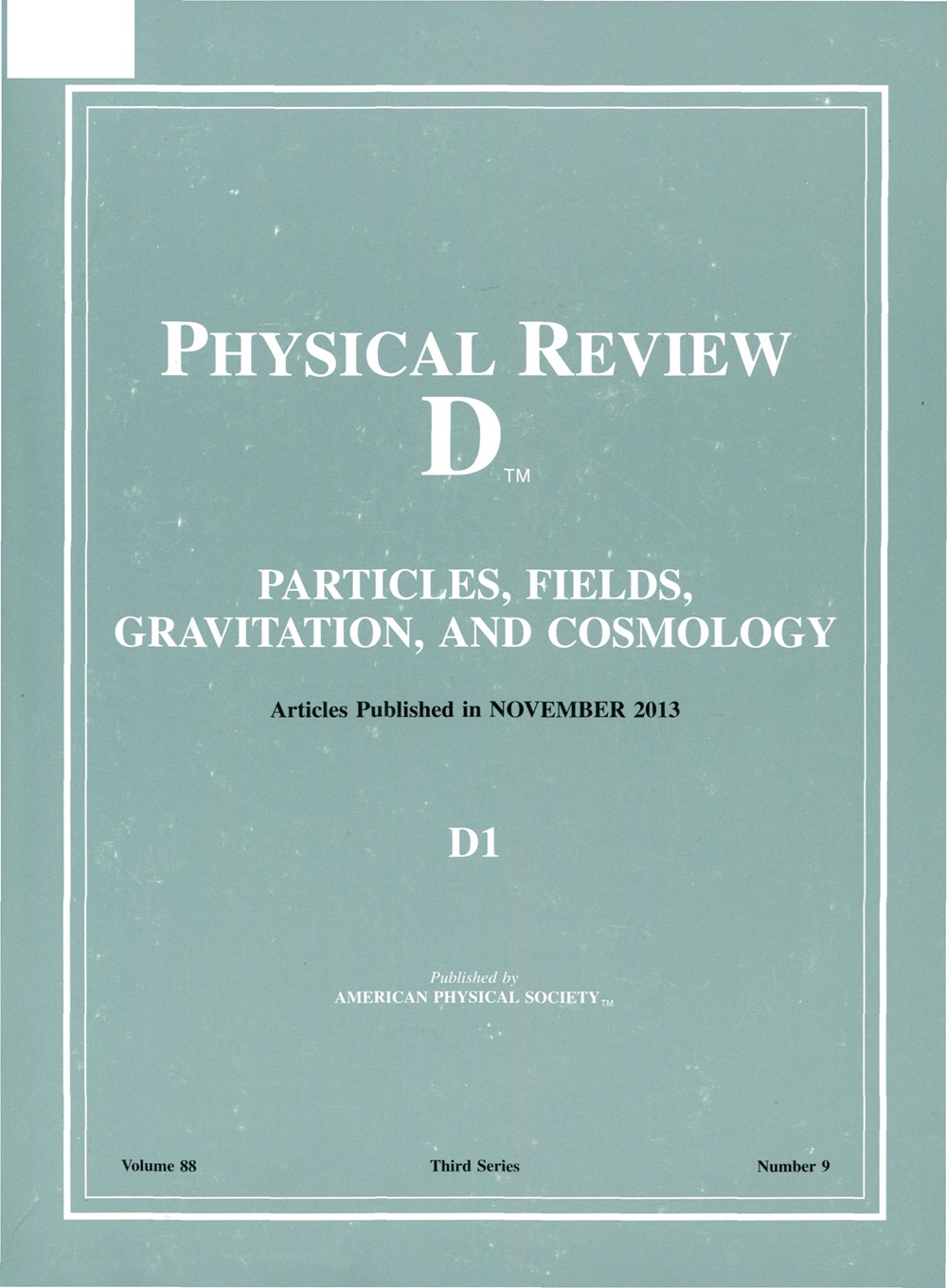6D large charge and 2D Virasoro blocks
IF 5.3
2区 物理与天体物理
Q1 Physics and Astronomy
引用次数: 0
Abstract
We compute observables in the interacting rank-one 6D N=(2,0) superconformal field theory (SCFT) at large6D大电荷和2D Virasoro块
我们计算了大r电荷下相互作用秩一6D N=(2,0)超共形场理论(SCFT)中的观测值。我们关注涉及Φn的相关器,即包含应力张量的超多元的底分量的对称积。通过使用模空间有效作用和来自大电荷展开的方法,我们在1/n的展开中计算算子积展开系数⟨ΦnΦmΦn+m⟩。从6D的角度来看,扩展的系数只是部分确定的,但我们设法通过利用6D/2D的对应关系,在数值上以1/n的顺序固定它们。这是由于可以从真空Virasoro块的特定双尺度极限中提取2D的6D观测值,这可以有效地进行数值计算。我们还将计算扩展到更高阶的scft,并讨论了我们的结果在6D和2D中的各种应用。2025年由美国物理学会出版
本文章由计算机程序翻译,如有差异,请以英文原文为准。
求助全文
约1分钟内获得全文
求助全文
来源期刊

Physical Review D
物理-天文与天体物理
CiteScore
9.20
自引率
36.00%
发文量
0
审稿时长
2 months
期刊介绍:
Physical Review D (PRD) is a leading journal in elementary particle physics, field theory, gravitation, and cosmology and is one of the top-cited journals in high-energy physics.
PRD covers experimental and theoretical results in all aspects of particle physics, field theory, gravitation and cosmology, including:
Particle physics experiments,
Electroweak interactions,
Strong interactions,
Lattice field theories, lattice QCD,
Beyond the standard model physics,
Phenomenological aspects of field theory, general methods,
Gravity, cosmology, cosmic rays,
Astrophysics and astroparticle physics,
General relativity,
Formal aspects of field theory, field theory in curved space,
String theory, quantum gravity, gauge/gravity duality.
 求助内容:
求助内容: 应助结果提醒方式:
应助结果提醒方式:


